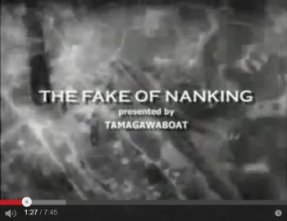
|
©Click to watch the video. |
On YouTube, the author came across a video titled gFake of Nankingh (produced by TAMAGAWABOAT). Since the author considers the caption of the video is pretty accurate and the description is worthy of careful reading and further scrutiny, I typed out the entire scripts as follows. I also placed notes, where appropriate, as supplementary knowledge on history for more understanding of the slide pictures.

©Click to watch the video.
| Slide No., time & caption | |
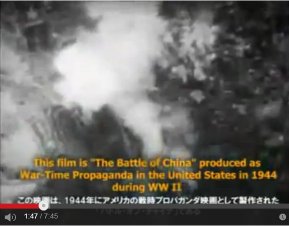 |
Slide 01/ 1:47
This film is gThe Battle of Chinah produced as War-Time Propaganda in the United States in 1944 during WWII. |
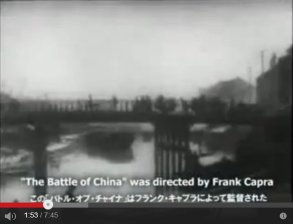 |
Slide 02/ 1:53
gThe Battle of Chinah was directed by Frank Capra |
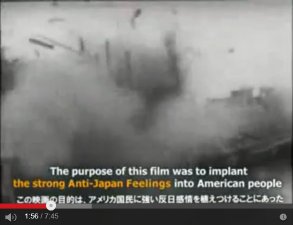 |
Slide 03/ 1:56
The purpose of this film was to implant the strong Anti-Japan Feelings into American people. |
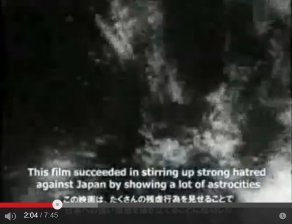 |
Slide 04/ 2:04
This film succeeded in stirring up strong hatred against Japan by showing a lot of atrocities. |
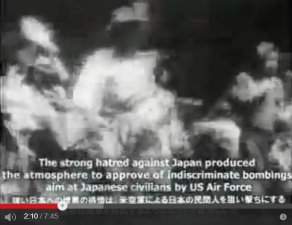 |
Slide 05/ 2:10
The strong hatred against Japan produced the atmosphere to approve of indiscriminate bombings aimed at Japanese civilians by US Air Force. |
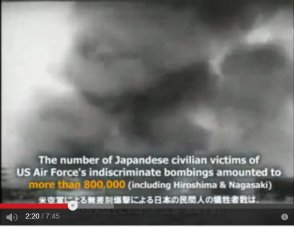 |
Slide 06/ 2:20
The number of Japanese civilian victims of US Air Forcefs indiscriminate bombings amounted to more than 800,000 (including Hiroshima and Nagasaki) |
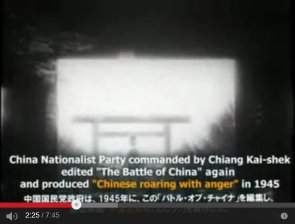 |
Slide 07/ 2:25
China Nationalist Party commanded by Chiang Kai-shek edited gThe Battle of Chinah again and produced gChinese roaring with angerh in 1945 |
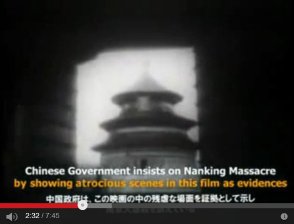 |
Slide 08/ 2:32
Chinese Government insists on Nanking Massacre by showing atrocious scenes in this film as evidences |
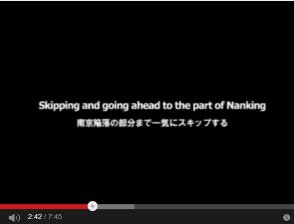 |
Slide 09/ 2:42
Skipping and going ahead to the part of Nanking |
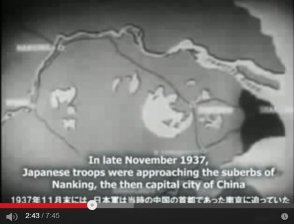 |
Slide 10/ 2:43
In late November 1937, Japanese troops were approaching the suburbs of Nanking, the then capital city of China |
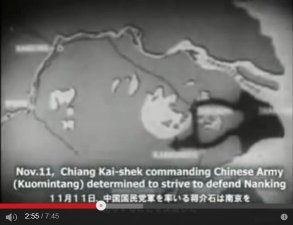 |
Slide 11/ 2:55
Nov.11, Chiang Kai-shek commanding Chinese Army (Kuomintang) determined to strive to defend Nanking |
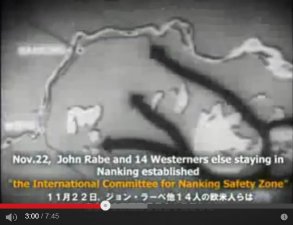 |
Slide 12/ 3:00
Nov.22, John Rabe and 14 Westerners and else staying in Nanking established gthe International Committee for Nanking Safety Zoneh |
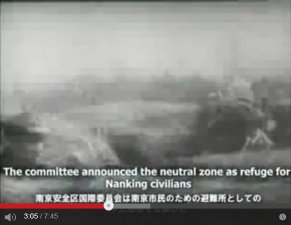 |
Slide 13/ 3:05
The committee announced the neutral zone as refuge for Nanking civilians |
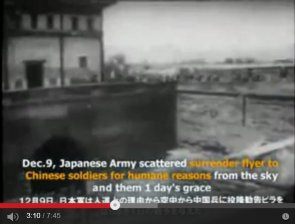 |
Slide 14/ 3:10
Dec.9, Japanese Army scattered (sprayed) surrender flyer to Chinese soldiers for humane reasons from the sky and then 1 dayfs grace |
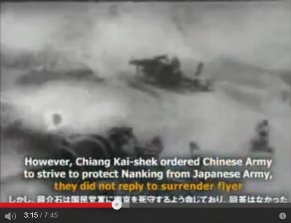 |
Slide 15/ 3:15
However, Chiang Kai-shek ordered Chinese Army to strive to protect Nanking from Japanese Army, and they did not reply to surrender flyer |
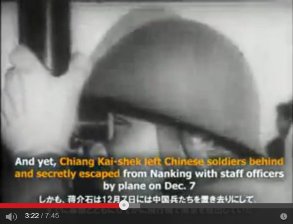 |
Slide 16/ 3:22
And yet (Besides), Chiang Kai-shek left Chinese soldiers behind and secretly escaped from Nanking with staff officers by plane on Dec.7 |
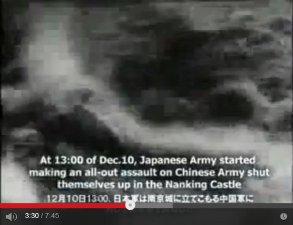 |
Slide 17/ 3:30
At 13:00 of Dec.10, Japanese Army started an all-out assault on Chinese Army shut themselves up in the Nanking Castle |
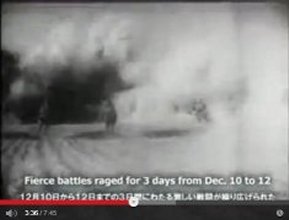 |
Slide 18/ 3:36
Fierce battles raged for 3 days from Dec.10 to 12 |
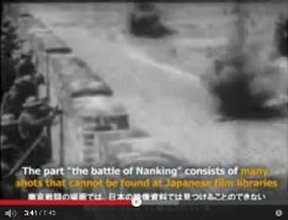 |
Slide 19/ 3:41
The part gthe battle of Nankingh consists of many shots that cannot be found at Japanese film libraries. |
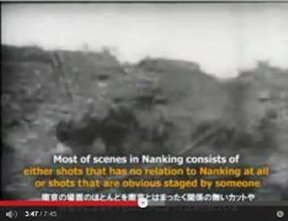 |
Slide 20/ 3:47
Most of scenes in Nanking consist of either shots that has no relation to Nanking at all or shots that are obviously staged by someone. |
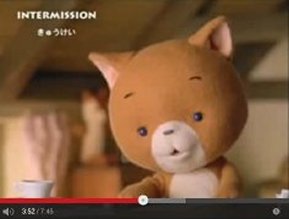 |
Slide 21/ 3:52
INTERMISSION |
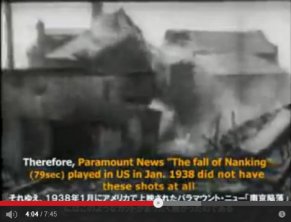 |
Slide 22/ 4:04
Therefore, Paramount News gThe fall of Nankingh played in Jan., 1938 did not have these shots at all. |
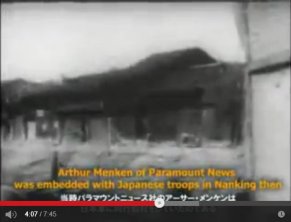 |
Slide 23/ 4:07
Arthur Menken of Paramount News was embedded (accompanied) with Japanese troops in Nanking then (that time). |
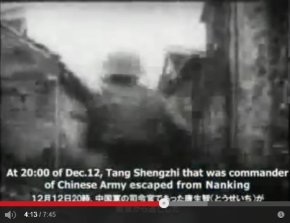 |
Slide 24/ 4:13
At 20:00 of Dec.12, Tang Shengzhi, Commander of Chinese Army (defending Nanking) escaped from Nanking. |
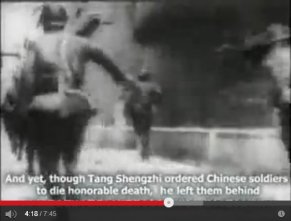 |
Slide 25/ 4:18
And yet, (Moreover, while) Tang Shengzhi ordered Chinese soldiers to die honorable death, he left them behind. |
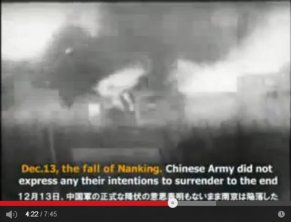 |
Slide 26/ 4:22
Dec.13, the fall of Nanking. Chinese Army did not express any their intentions to surrender to the end. |
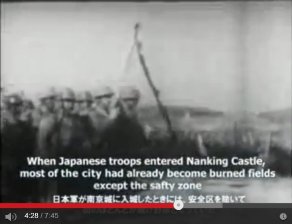 |
Slide 27/ 4:28
When Japanese troops entered Nanking Castle, most of the city had already become burned fields except for the safety zone. |
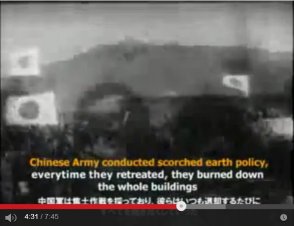 |
Slide 28/ 4:31
Chinese Army conducted scorched earth policy, every time they retreated, they burned down the whole buildings, |
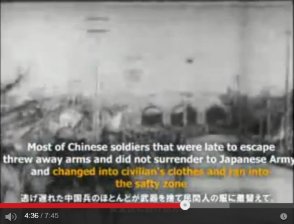 |
Slide 29/ 4:36
Most of Chinese soldiers that were late to escape threw away arms and did not surrender to Japanese Army, and changed into civilian clothes and ran into the safety zone. |
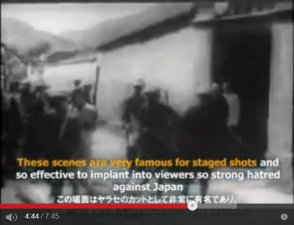 |
Slide 30/ 4:44
These scenes are very famous for staged shots and so effective to implant into viewers so strong hatred against Japan. |
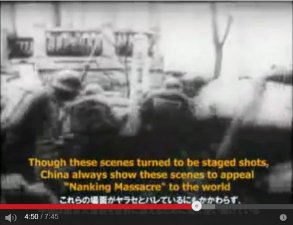 |
Slide 31/ 4:50
Though these scenes turned to be staged shots, China always show these scenes to appeal gNanking Massacreh to the world. |
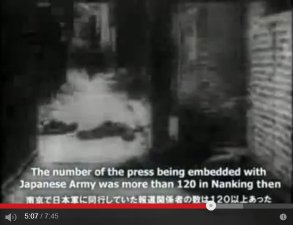 |
Slide 32/ 5:07
The number of the press being embedded (accompanied) with Japanese Army was more than 120 in Nanking then. |
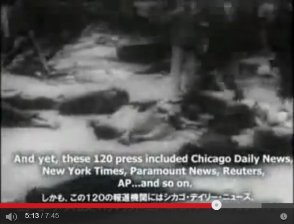 |
Slide 33/ 5:13
And yet (Moreover), these 120 press included Chicago Daily News, New York Times, Paramount News, Reuters, APccand so on. Note that the narration says, gIn one of the bloodiest massacres of the recorded history, they murdered 40,000 men, women, and children.h (although the Chinese Government claims the number of victims is 300,000.) |
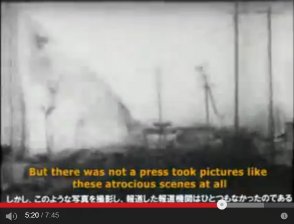 |
Slide 34/ 5:20
But there was not a press that took pictures like these atrocious scenes at all. |
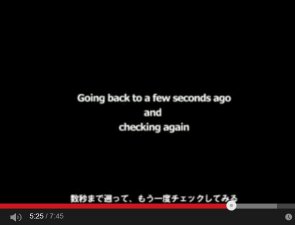 |
Slide 35/ 5:25
Going back to a few seconds ago and checking again |
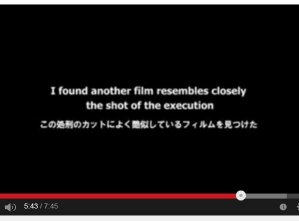 |
Slide 36/ 5:43
I found another film resembles closely the shot of the execution. |
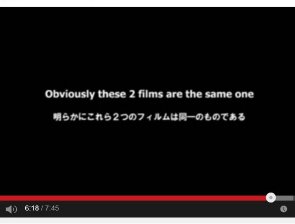 |
Slide 37/ 6:18
Obviously these 2 films are the same one |
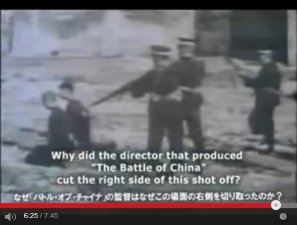 |
Slide 38/ 6:25
Why did the director that produced gThe Battle of Chinah cut the right side of this shot off? |
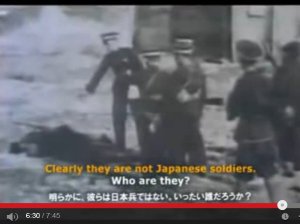 |
Slide 39/ 6:30
Clearly they are not Japanese soldiers. Who are they? Note: Shape of the hats and color of the uniforms are totally different from those of the Japanese soldiers. |
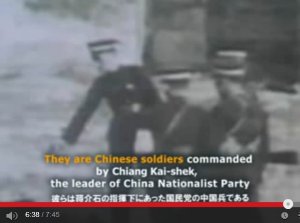 |
Slide 40/ 6:38
They are Chinese soldiers commanded by Chiang Kai-shek, the leader of China Nationalist Party Note: They must be gIndigo-blue Uniform Troops,h the elite corps under the direct command of Chiang Kai-shek. |
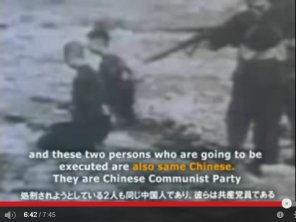 |
Slide 41/ 6:42
and these two persons who are going to be executed are also the same Chinese. They are Chinese Communist Party Note: Chiang Kai-shekfs Nationalist Army made Shanghai Coup (a.k.a. 4.12 Coup) and killed thousands of communists in 1927 during the Northern Expedition on route to Beijin. The Nationalist Army also carried out annihilation against Maofs Soviet Base at Ruijin iàj5 times during 1930 to 35. Therefore, Chinese Politburo must have plenty of such films, although precise identification of the victims is not known. |
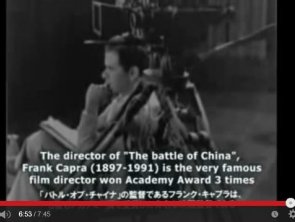 |
Slide 42/ 6:53
The director of gThe Battle of China,h Frank Capra (1897-1991) is the very famous film director won Academy Award 3 times |
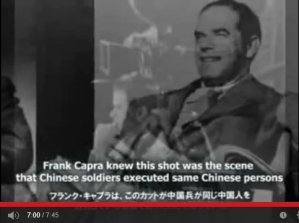 |
Slide 43/ 7:00
Frank Capra knew this shot was the scene that Chinese soldiers executed the same Chinese persons |
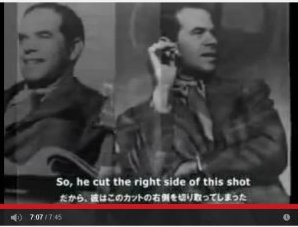 |
Slide 44/ 7:07
So, he cut the right side of this shot |
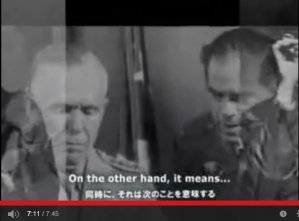 |
Slide 45/ 7:11
On the other hand, it meansc |
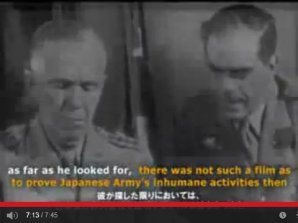 |
Slide 46/ 7:13
As far as he looked (searched) for, there was not such a film as to prove Japanese Armyfs inhumane activities (back) then |
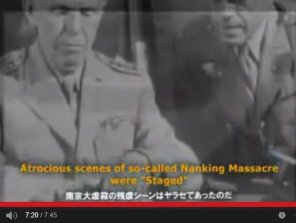 |
Slide 47/ 7:20
Atrocious scenes of so-called Nanking Massacre were gStagedh |
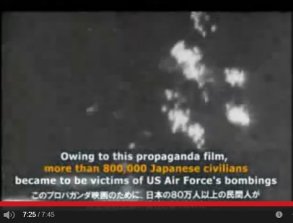 |
Slide 48/ 7:25
Owing to this propaganda film, more than 800,000 Japanese civilians became to be victims of US Air Forcefs bombings |
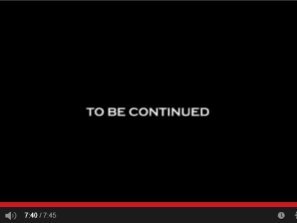 |
Slide 49/ 7:40
TO BE CONTINUED |
|
|
To the top of this page |
|
|
Return to Home |